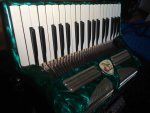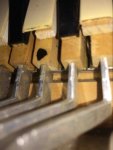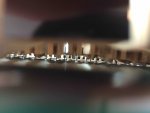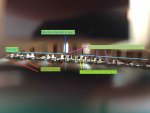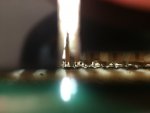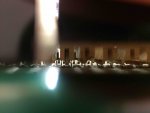Mr Mark
Squeezebaggeroni...
My new/used Lignatone (Delicia I believe) sounds great except for the obnoxious squeaks coming from under the keyboard.
It sounds like either the springs are corroded or their ends are moving on the wood (scratching) - or some other thing is happening that I don't know - but it is on pretty much every key.
So far I am finding Teflon lubrication is working to remedy things but at some point I realize I am going to want to adjust the action of the keys and may or may not have to replace the springs.
However, there are no spindle caps and there are no 'springs' holding the keys on. Is there another way that keys are affixed or is the spindle rod hidden (requiring drilling a hole in the end of the body)?
It sounds like either the springs are corroded or their ends are moving on the wood (scratching) - or some other thing is happening that I don't know - but it is on pretty much every key.
So far I am finding Teflon lubrication is working to remedy things but at some point I realize I am going to want to adjust the action of the keys and may or may not have to replace the springs.
However, there are no spindle caps and there are no 'springs' holding the keys on. Is there another way that keys are affixed or is the spindle rod hidden (requiring drilling a hole in the end of the body)?

